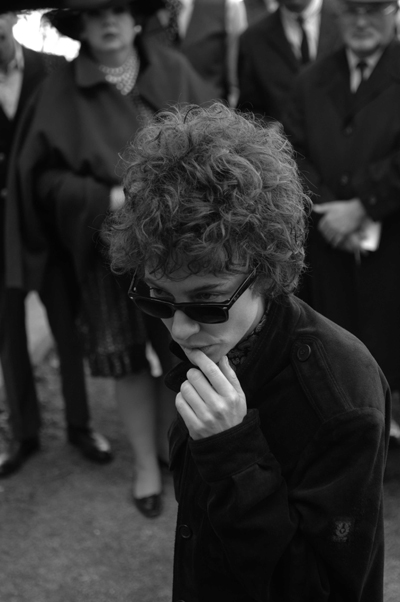By Delia Paunescu
Bob Dylan has long been an enigma on the pop culture scene. The folk singer has puzzled and interested the public throughout the past four decades, all while maintaining his air of mystery.
It makes sense that in the new film “I’m Not There,” director Todd Haynes (“Velvet Goldmine,” “Far From Heaven”) portrays Dylan through six different characters. They include an African-American boy (Marcus Carl Franklin), an aging outlaw (Richard Gere) and even Australian actress Cate Blanchett. All are representations of varying essences Dylan has embodied throughout his life.
The film begins with Woody Guthrie (Franklin), a young boy who travels the railways, writing songs about the boxcar life with only a guitar to call his own-in a case that reads “This machine kills fascists.” It is only when told by a kind, maternal figure to “write about his own time” that Guthrie realizes the power his songs could have.
Then there is Jack Rollins (Christian Bale) as the “troubadour of conscience.” He is the Dylan of the 1950s, the one who not only broke into the folk scene of Greenwich Village but who also broke through it, making the emerging musical movement more politically meaningful.
Cate Blanchett masterfully plays Jude Quinn (is there anything she can’t do?), the mod Dylan of the 1960s-the one coping with the backlash after deciding to not outwardly protest the war in Vietnam. Refusing to “be disassociated,” Quinn turns to the drugs of this period, in constant fear that he is nothing more than part of the scene.
As Haynes switches from one story to the next, viewers find themselves wanting to know more about the versions of Dylan so suddenly left behind. But even this disjointedness reveals the film’s precise construction. We are only given glimpses of these characters, because there is no fully knowing the real Dylan. While some different versions are introspective and fully fascinating, others (such as Billy the Kid, played by Richard Gere) seem superfluous.
It is clear the film has been painstakingly researched. Every aspect of the storylines, especially those of Rollins and Quinn, are filled with minute details that serious Dylan fans will recognize and appreciate.
While his previous work, “Velvet Goldmine,” dealt with a very different genre (glam rock) there are times when Haynes can’t help himself from the visual trippiness found in “Goldmine.” And much like that fake biopic, the integration of music to the story is well-executed here.
About halfway through, in the midst of the music, the protesting, and Blanchett’s Quinn out to prove his indifference, the audience begins to feel overwhelmed. It is precisely at this point that Arthur Rimbaud (Ben Whishaw) the pensive young Dylan, on a stark black and white screen says simply, “I accept chaos, I just don’t know if chaos accepts me.”
With “I’m Not There,” Haynes has turned the dull biopic on its head; the film is in no way linear nor biographically accurate, and only at the film’s end do audiences get to see the real Bob Dylan. Walking away from Haynes’ film, audiences may question what they’ve seen and any semblance of understanding it may take several hours if not days to form. But having seen this unique tribute, there is no denying the genius in it, both that of Dylan and that of Haynes.

Cate Blanchett as Jude Quinn, one representation of Dylan. (AllMoviePhoto.com)
